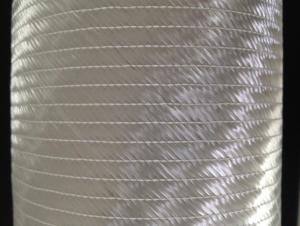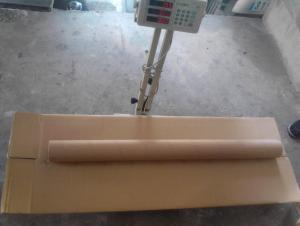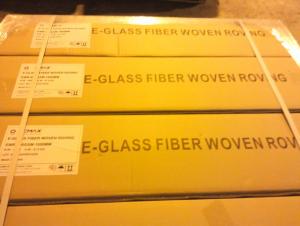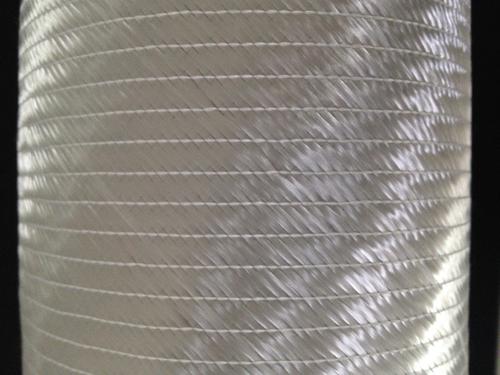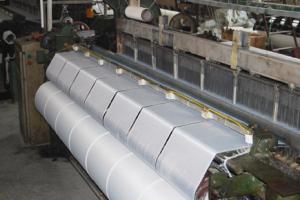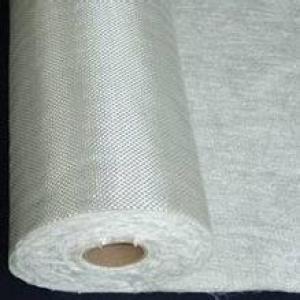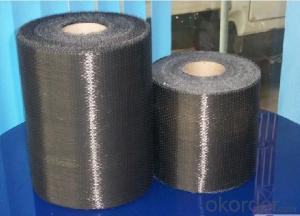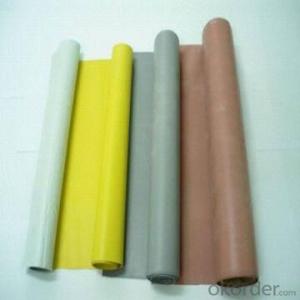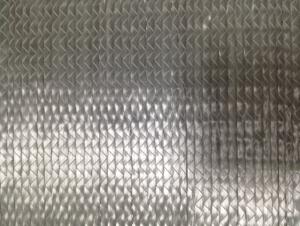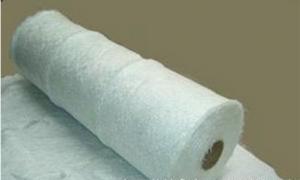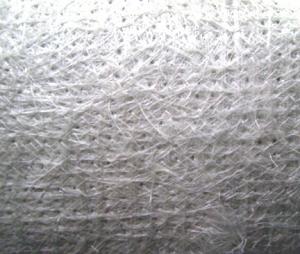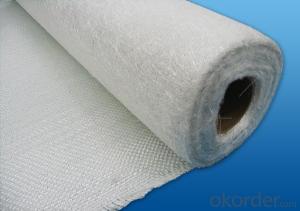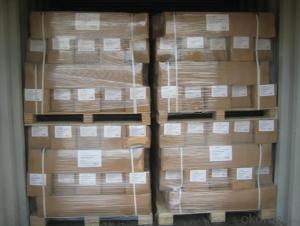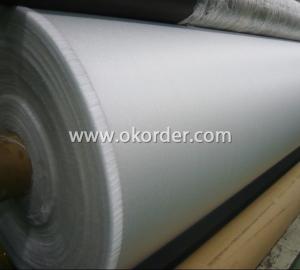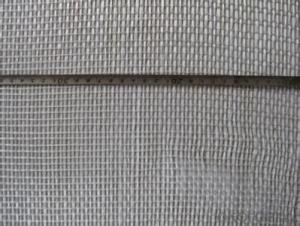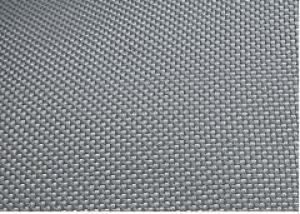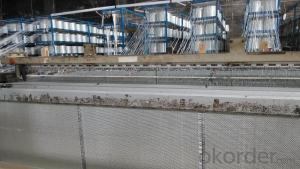Ptfe Fiberglass Fabric e-glass Stitch Combo Mat - Bx - Two Stages
- Loading Port:
- China Main Port
- Payment Terms:
- TT or LC
- Min Order Qty:
- -
- Supply Capability:
- -
OKorder Service Pledge
OKorder Financial Service
You Might Also Like
Brief Introduction:
Eglass stitched Combo Mat is a complex mat made by stitching together alayer of rovings consisting of parallel aligned rovings 0°,90°or ±45°and alayer of evenly distributed chopped strands.
E-glassstitched combo mat consists of two or more layers of fiber glass rovingswhich are stitch-bonded. one layer of rovings and differene layers of rovingscan be oriented differently and have different linear density. the rovingspecification, number of roving layers, mat width and roll diameter can becustomized as per requirement.
It’scompatible with UP, vinyl-ester, phenolic and epoxy resin.
Characteristics
1. Manufactured by own factory
2. Good wet-out in resins
3. Good strand dispersion and uniform area weight.
Specification
Specification | Woven roving (g/m2) | chopped(g/m2) | Polyester Yarn Density(g/m2) | total weight(g/m2) |
E300/300 | 308 | 302.25 | 6.3 | 616.55 |
E500/300 | 507 | 302.35 | 9.1 | 818.45 |
E500/450 | 507 | 458.17 | 9.1 | 974.27 |
E600/275 | 612 | 274.64 | 9.5 | 896.14 |
E600/300 | 612 | 305.15 | 9.5 | 926.65 |
E600/450 | 612 | 457.73 | 10.71 | 1080.44 |
E800/275 | 847 | 274.64 | 10.71 | 1132.35 |
E800/300 | 847 | 305.15 | 10.71 | 1162.86 |
E800/450 | 847 | 457.73 | 10.71 | 1315.44 |
FAQ
a.Pacage
Each Eglass stitched Combo Mat is wound onto a paper tube The roll is wrapped up with plastic film,and then packed in a cardboard box. The rolls can be vertically or horizontally placed. For transportation, the rolls can be loaded into a container directly or on pallets.
b.Product storage:
Unless otherwise specified, CHEMICAL FIBER GRIDDING CLOTH should be stored in a dry, cool and rain-proof area. It is recommended that the room temperature and humidity should be always maintained at 15℃~35℃ and 50%~75% respectively.
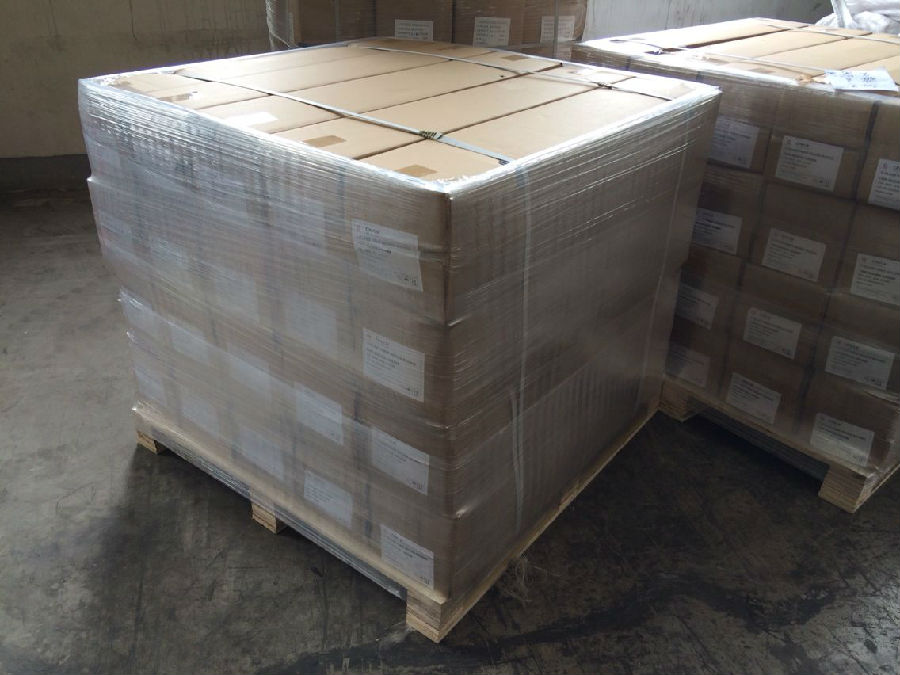
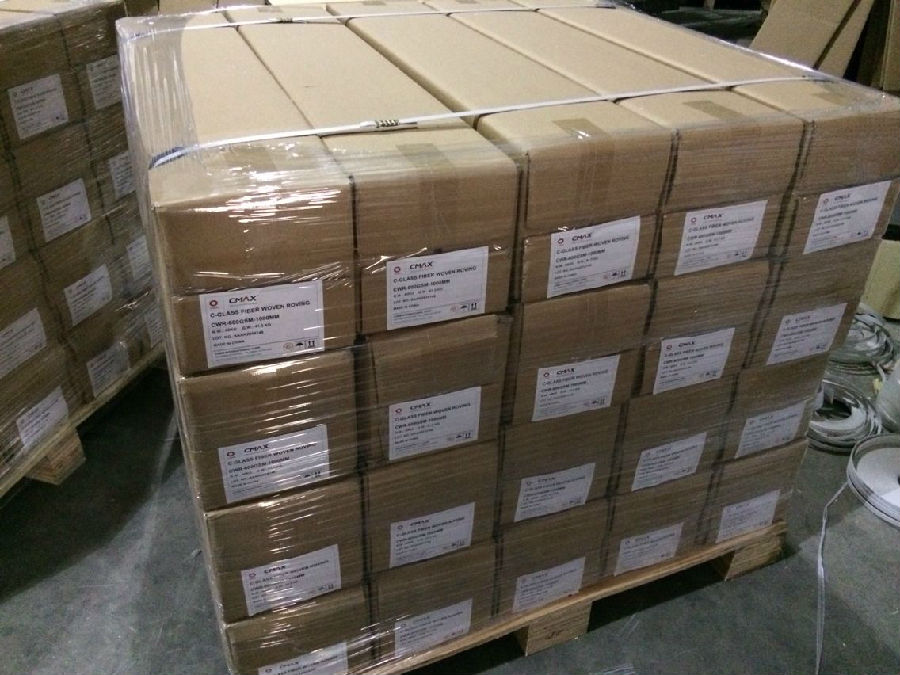
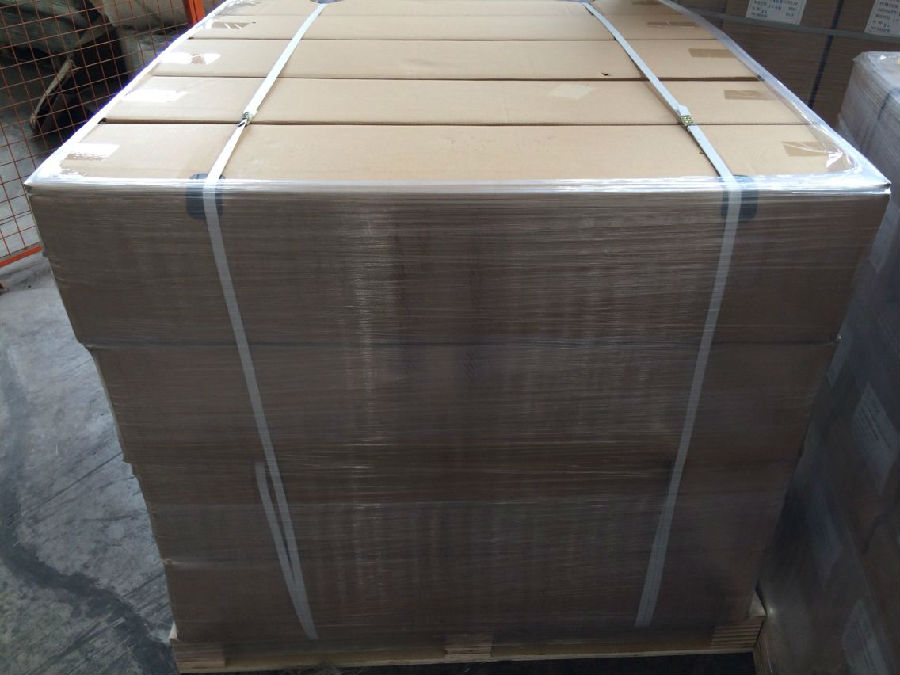
- Q: Can fiberglass fabric be used for insulation in aerospace structures?
- Yes, fiberglass fabric can be used for insulation in aerospace structures. Fiberglass fabric is a lightweight and flexible material that offers excellent thermal insulation properties. It can effectively trap heat and reduce heat transfer, making it suitable for insulating aerospace structures where temperature regulation is critical. Additionally, fiberglass fabric is also resistant to fire, chemicals, and moisture, further enhancing its suitability for aerospace applications. Its high strength-to-weight ratio and durability make it an ideal choice for insulating various components such as fuel tanks, engine compartments, and heating systems in aerospace structures.
- Q: Polyurethane waterproof coating how to use, polyurethane waterproof coating what are the methods of use?
- Polyurethane waterproof coating construction process: 1., cleaning the base, 2. brushing glue, 3. details additional layer, 4., the first coating, 5., second coating, 6., third coating and clay slag.
- Q: Is fiberglass fabric suitable for making outdoor cushions?
- Indeed, outdoor cushions can be crafted with fiberglass fabric, which is renowned for its durability, strength, and ability to withstand diverse weather conditions. This fabric proves to be a fitting selection for outdoor purposes as it resists fading, UV rays, and mold, which are prevalent concerns for outdoor cushions. Moreover, fiberglass fabric often possesses water-resistant or water-repellent properties, rendering it ideal for outdoor use where cushions may encounter rain or other forms of moisture. Ultimately, fiberglass fabric provides a dependable and enduring choice for outdoor cushions, guaranteeing their ability to withstand the elements and uphold their superior quality throughout time.
- Q: Is fiberglass fabric resistant to moisture absorption?
- Fiberglass fabric exhibits resistance to moisture absorption. Its resistance stems from its composition of fine glass fibers, which are inorganic and non-hygroscopic. These fibers do not interact with water and are not easily permeated by moisture. Consequently, fiberglass fabric retains its moisture resistance, rendering it a fitting material for scenarios where protection against water is crucial, such as outdoor and marine settings.
- Q: What are the different strengths available in fiberglass fabric?
- Fiberglass fabric possesses exceptional strength and durability, rendering it a widely favored material across various industries. The strength of fiberglass fabric varies, contingent upon the type of fibers utilized and the weaving pattern employed. One notable strength of fiberglass fabric lies in its remarkable tensile strength, which alludes to its ability to endure stretching or pulling forces without succumbing to breakage. Fiberglass fabric with high tensile strength exhibits resilience against heavy loads and deformation, thus proving suitable for applications necessitating structural integrity. Another advantage of fiberglass fabric lies in its superb resistance to chemical corrosion. Fiberglass inherently boasts corrosion resistance, enabling it to endure exposure to diverse chemicals without deteriorating. This attribute renders fiberglass fabric an ideal choice for industries involved in chemical processing, oil and gas, and marine activities. Furthermore, fiberglass fabric demonstrates remarkable heat resistance, retaining its structural integrity and mechanical properties even when subjected to high temperatures. This strength renders fiberglass fabric well-suited to applications that entail exposure to extreme heat, such as insulation materials, fire-resistant barriers, and protective clothing. Moreover, fiberglass fabric exhibits commendable electrical insulation properties. It possesses a high dielectric strength, allowing it to endure high voltages without conducting electricity. This attribute makes fiberglass fabric suitable for utilization in the electrical and electronics industries, including insulating components and circuit boards. Additionally, fiberglass fabric is renowned for its lightweight yet sturdy characteristics. In comparison to materials with similar strength attributes, fiberglass fabric is relatively light in weight. This quality positions it as a preferred choice in industries where weight reduction holds significance, including the aerospace and automotive sectors. In summary, fiberglass fabric is available in various strengths to cater to the diverse needs of different industries. Its high tensile strength, resistance to chemical corrosion, heat resistance, electrical insulation properties, and lightweight nature make it an exceedingly versatile material for a wide array of applications.
- Q: How is fiberglass fabric used in the production of fire-resistant curtains?
- Fiberglass fabric is used in the production of fire-resistant curtains due to its high heat resistance and non-flammable properties. It acts as a barrier against flames and helps prevent the spread of fire, providing a safety measure in case of emergencies.
- Q: What are the different roll lengths available for fiberglass fabric?
- The roll lengths available for fiberglass fabric can vary depending on the manufacturer and specific product. However, common roll lengths for fiberglass fabric range from around 50 yards to 100 yards.
- Q: How long does fiberglass fabric typically last?
- Fiberglass fabric is known for its durability and longevity, making it a popular choice for various applications. The lifespan of fiberglass fabric can vary depending on several factors, such as the quality of the fabric, its exposure to external conditions, and how well it is maintained. On average, fiberglass fabric can last anywhere from 10 to 30 years. However, with proper care and maintenance, it is possible for it to last even longer. Regular cleaning, preventing excessive exposure to harsh chemicals or extreme temperatures, and avoiding physical damage can significantly prolong the lifespan of fiberglass fabric. It is important to note that fiberglass fabric can become brittle and lose its structural integrity over time, especially if exposed to continuous high temperatures or harsh environmental conditions. Additionally, natural wear and tear can also contribute to its eventual deterioration. To ensure the longest possible lifespan for fiberglass fabric, it is advisable to follow the manufacturer's guidelines regarding maintenance and care. Regular inspections for signs of damage or wear, and prompt repairs or replacements when necessary, can help extend the life of fiberglass fabric.
- Q: Can fiberglass fabrics be used for insulation purposes?
- For insulation purposes, fiberglass fabrics are a suitable option. These fabrics consist of extremely fine glass fibers that are woven together, resulting in a material that is lightweight and flexible. The excellent insulation properties of this fabric are due to its ability to trap air and prevent the transfer of heat or cold. Commonly used in insulation applications, fiberglass fabrics are employed for insulating pipes, ducts, walls, and roofs. They are also utilized in the production of thermal blankets and curtains designed for insulation purposes. Moreover, fiberglass fabrics can be combined with other insulating materials to enhance their overall effectiveness. One of the main advantages of using fiberglass fabrics for insulation is their high thermal resistance. With a low thermal conductivity, these fabrics can significantly reduce heat transfer and maintain stable temperatures in insulated areas. Additionally, fiberglass fabrics are non-combustible and exhibit good resistance to moisture and chemicals, making them suitable for a wide range of insulation applications. Furthermore, fiberglass fabrics are easy to handle and install. They can be easily cut and shaped to fit specific dimensions, and can be attached to surfaces using mechanical fasteners or adhesive. Due to their flexibility and ease of installation, fiberglass fabrics are a popular choice for insulation projects in both residential and commercial settings. To conclude, fiberglass fabrics are an excellent option for insulation purposes. Their high thermal resistance, durability, and ease of installation make them a versatile and effective solution for various insulation applications.
- Q: Can fiberglass fabric be used for making awnings?
- Yes, fiberglass fabric can be used for making awnings. Fiberglass is a lightweight and durable material that is commonly used in various applications, including awnings. It offers excellent resistance to UV rays, water, and weather conditions, making it suitable for outdoor use. Additionally, fiberglass fabric is fire-resistant and has good insulation properties, which can help to regulate temperature and provide shade. It is also easy to clean and maintain, making it an ideal choice for awnings.
Send your message to us
Ptfe Fiberglass Fabric e-glass Stitch Combo Mat - Bx - Two Stages
- Loading Port:
- China Main Port
- Payment Terms:
- TT or LC
- Min Order Qty:
- -
- Supply Capability:
- -
OKorder Service Pledge
OKorder Financial Service
Similar products
Hot products
Hot Searches
Related keywords
